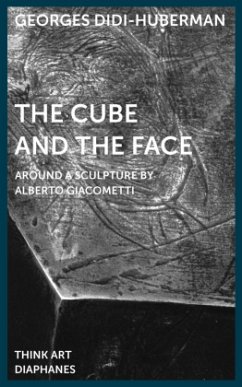Alberto Giacometti's 1934 Cube stands apart for many as atypical of the Swiss artist, the only abstract sculptural work in a wide oeuvre that otherwise had as its objective the exploration of reality. With The Cube and the Face, renowned French art historian and philosopher Georges Didi-Huberman has conducted a careful analysis of Cube, consulting the artist's sketches, etchings, texts, and other sculptural works in the years just before and after Cube was created. Cube, he finds, is indeed exceptional-a work without clear stylistic kinship to the works that came before or after it. At the same time, Didi-Huberman shows, Cube marks the transition between the artist's surrealist and realist phases and contains many elements of Giacometti's aesthetic consciousness, including his interest in dimensionality, the relation of the body to geometry, and the portrait-or what Didi-Huberman terms "abstract anthropomorphism." Drawing on Freud, Bataille, Leiris, and others whom Giacometticounted as influences, Didi-Huberman presents fans and collectors of Giacometti's art with a new approach to transitional work.
Hinweis: Dieser Artikel kann nur an eine deutsche Lieferadresse ausgeliefert werden.
Hinweis: Dieser Artikel kann nur an eine deutsche Lieferadresse ausgeliefert werden.
"A spiral-shaped investigation of Giacometti's work revolving around various readings of one of his sculptures ... Didi-Huberman exploits the formal presence of Cube to construct a metaphoric and polyphonic interplay of critical facets which allows him to engage with a range of Giacometti's aesthetical investigations." Timothy Mathews, excerpt from Alberto Giacometti: The Art of Relation.








